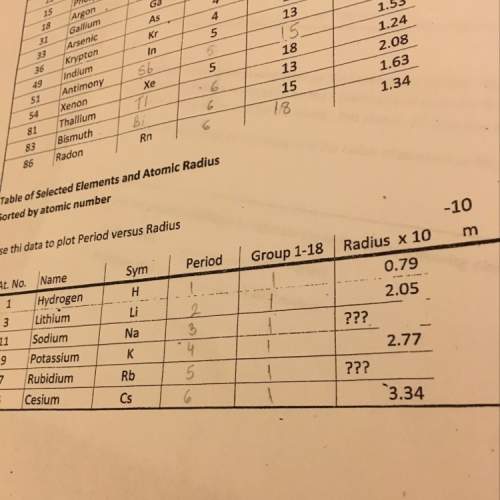
Chemistry, 29.04.2021 15:50, sbailey0962
Examine the following sequence of phase change: Solid—>Liquid=>Gas.
Would we need to ADD OR REMOVE heat energy?
A Remove
B. Add
C. Neither
D. Both
o
of what phase change?
NO LINKS

Answers: 3
Other questions on the subject: Chemistry


Chemistry, 22.06.2019 13:00, wbrandi118
Using the thermodynamic information in the aleks data tab, calculate the standard reaction free energy of the following chemical reaction: →+p4o10s6h2ol4h3po4s round your answer to zero decimal places.
Answers: 3

Chemistry, 22.06.2019 22:10, zwbaby3693
Which aqueous solution of ki freezes at the lowest temperature? 1) 1 mol of ki in 500. g of water 2) 2 mol of ki in 500. g of water 3) 1 mol of ki in 1000. g of water 4) 2 mol of ki in 1000. g of water
Answers: 3
Do you know the correct answer?
Examine the following sequence of phase change: Solid—>Liquid=>Gas.
Would we need to ADD OR...
Questions in other subjects:








Social Studies, 14.06.2020 21:57

Social Studies, 14.06.2020 21:57

Mathematics, 14.06.2020 21:57







